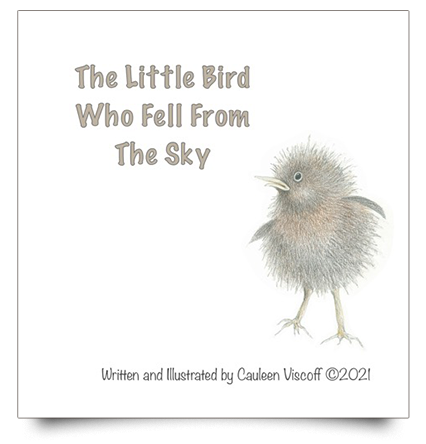I’d love to connect with you! Sign up for my monthly newsletter, "Garden Bliss & Blunder”
PLANTING TREES
... for life.
Instead of planting your own tree, you might consider hiring "the guy in the blue truck" who will charge you $100 to plant your tree.
...but if the tree dies, where is the guy in the blue truck?
Hire a professional to do it right who'll guarantee to replace it IF it dies.
I'm passionate about planting trees correctly.... First, be sure to choose the best tree for your zone, the light and space it will need and then before you plant it, understand why and how to do it correctly.
Here are the tragic results of an incorrectly planted tree
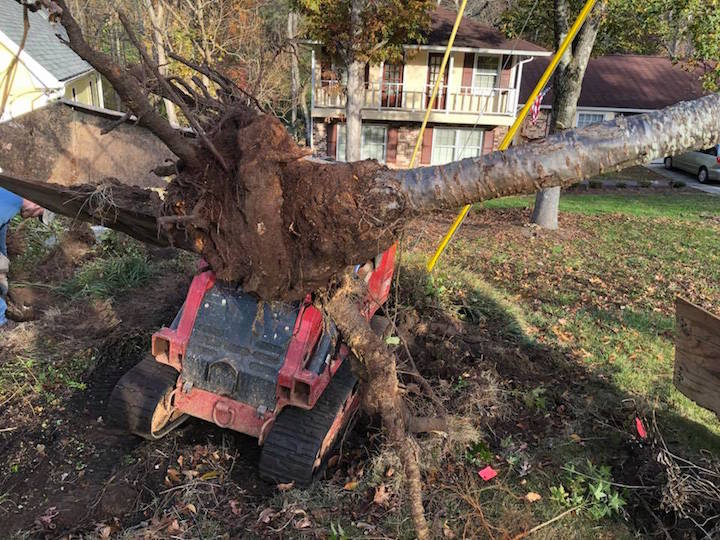
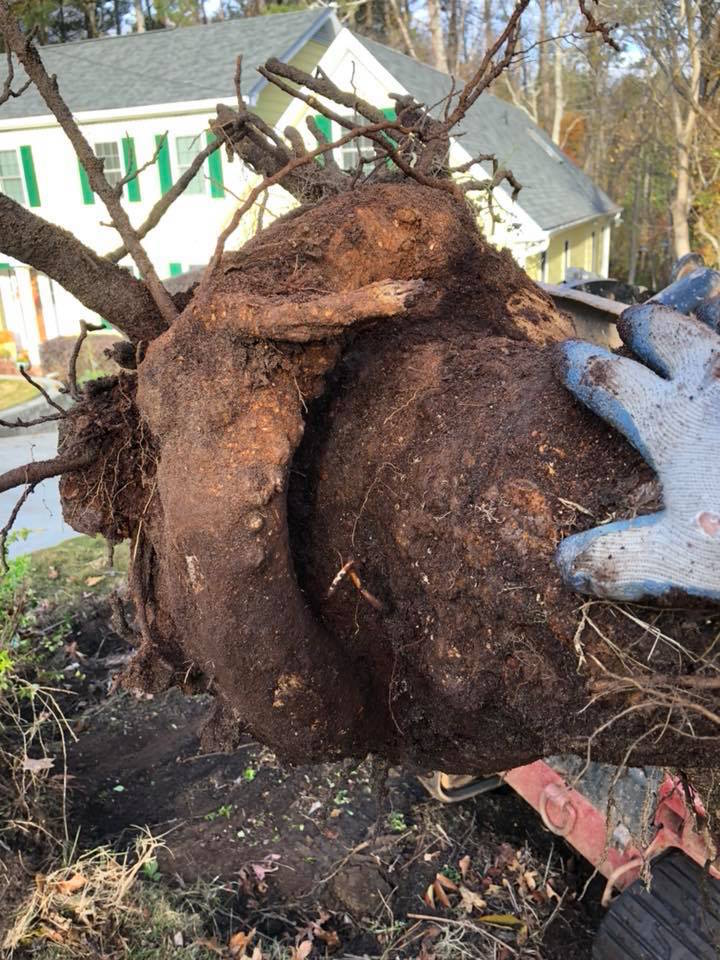
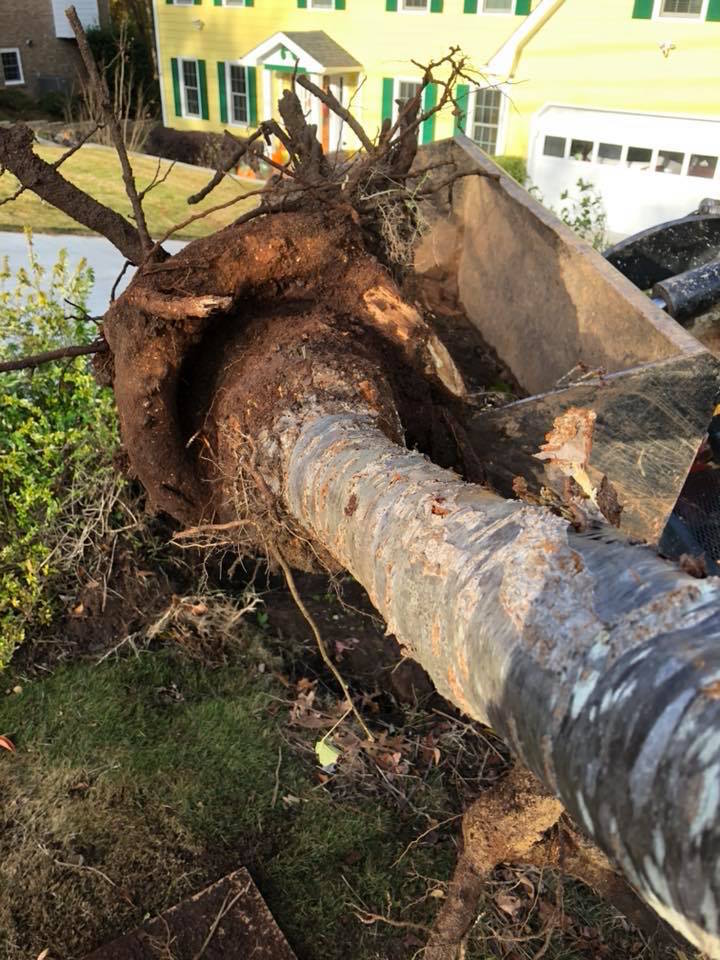
These are the notes from
Lyle Collins of Southern Trillium LLC In Georgia...
who took these photos and said:
"This is a textbook example of a girdling root.
We dug this out of a client’s yard this morning. The client said it had been dying back on one side of the canopy. It was also planted under the utility lines. Upon digging it up, it was obvious why it was struggling. A single root girdled nearly all the way around.
I am not sure who planted it or when, but I believe I am safe in assuming it was a pot bound, container grown tree."
If you still haven't chosen a tree, look here:
HOW TREES ARE SHIPPED
(understand this before you plant)
BALLED and BURLAPPED- or B&B
-the tree is dug at the nursery and its root ball is wrapped clay soil, surrounded by burlap and then encased in a wire basket; all held together with synthetic cording- ready for shipping or storing.
Sometimes, if trees are not sold in one season, they are hilled up with soil, still in their B&B state until the following season. It is not uncommon for roots to become encircled inside the wire cage and burlap.
BARE ROOT TREES
- are sold with no soil around the root. These trees are dug and stored in a cool place when dormant so they need no soil to keep the roots alive. They will need to be soaked overnight before planting and while they are still dormant.
They may arrive with a bit of moss and plastic wrap around the root, but no soil.
POTTED TREES
- come in containers or pots. These trees are usually smaller (easier to transport by the home gardener) and may be dug by the nursery days or weeks (tragically, sometimes months) before going to the garden shops to sell. Over time, they too will become root bound.
WHEN SHOULD YOU PLANT?
If you live in zones 5 and under, plant deciduous trees when they are dormant, either in early spring as soon as the ground thaws, or in the fall - but well before frost and will need to be well-watered before winter.
Early cold winters bring snow, creating dry, desert-like conditions and because the trees and the ground stay frozen, neither will benefit from snow until it melts in the spring.
Hot summers are not the best times to plant trees as they are already under stress and the heat adds to that.
Evergreens
-can be planted with a bit more latitude but still not ideal when the summer is hot.
DIFFERENT OPINIONS on PLANTING:
Before deciding which method is best for you,
think about how the roots grow.
Most trees do not have deep roots and the roots (in most cases) actually spread horizontally.
Those roots are in the top 10 to 12 inches (25-35 cm) of soil. (Incredible how a 40 foot tree’s roots don't go much deeper than a foot or so).
BALLED & BURLAPPED
Planting a tree with its wire basket, lined with burlap and tied with synthetic cord left still on its root ball, imagine how difficult for those tiny hair-like roots to push through that burlap... or get water and nutrients - next to impossible.
Originally, burlap was made of hemp. Today, it is often synthetic and treated with chemicals to keep it from deteriorating.
This is good for the nursery that digs hundreds of trees and has to store them for a long time - (sometimes weeks; sometimes several seasons if they don't sell - but not for the tree.
When they dig a tree to sell, they get as much of the root ball as possible along with some heavy clay soil to hold the roots intact and moist - all that is supported with a wire basket and burlap until the tree is shipped to the garden centre and then to your garden.
There are many professionals who still believe all this supporting material should be left intact when the tree is planted.
I strongly disagree and here is some science
to show you why.
See the Myths and Truths about planting B&B Trees
Now, let's get back to planting.
HOW TO PLANT A TREE:
BALLED & BURLAPPED
DIGGING THE HOLE:
Make the hole only as deep as the bottom of the root ball. Burying it too deep will shorten its life span.
Look for the slight flare where the trunk meets the root ball… that flare should be above ground.
(see the sketch below that shows the flare).
Make the hole three times the width of the root ball and let it slope outward to the sides - like a saucer - so the roots will have room to spread.
Fluff or soften the edges so the little hair-like roots can spread.
Planting in a newly built subdivision:
You may have to dig the hole wider because shortly before you moved in, heavy machines and trucks pounded over the ground where you are now attempting to make a garden. That compacted soil will inhibit those tiny hair-like roots, so dig the hole wider.
Wash the soil from the roots - as much as possible.
Your soil will not be native to your plot (garden) and will only slow down the growth of your tree. Use the soil you dug out and add some compost on top of the soil when you are finished... then mulch..
A RECENT NOTE:
In the past, I have suggested amending the soil when you plant but there is scientific research (see Dr. Chalker-Scott) showing there is no proven benefit in adding anything to the planting hole.
Remove soil from the new tree's roots and plant the tree in the soil in which it is expected to grow.
However, there may be some instances in a new build site - where the soil is is full of bits of concrete, drywall, and other icky bits and the contractor brought in soil from somewhere else and is only a few inches on top of this debris - then you may decide to add compost and microbes.
Before you add anything to any soil, make sure you know why or have a soil test.
If you add fertilizer or rich compost to the hole, the tree roots will happily stay in that space and never spread its roots beyond, girdling the hole.
plant with intention - do your research.
Prepare the tree

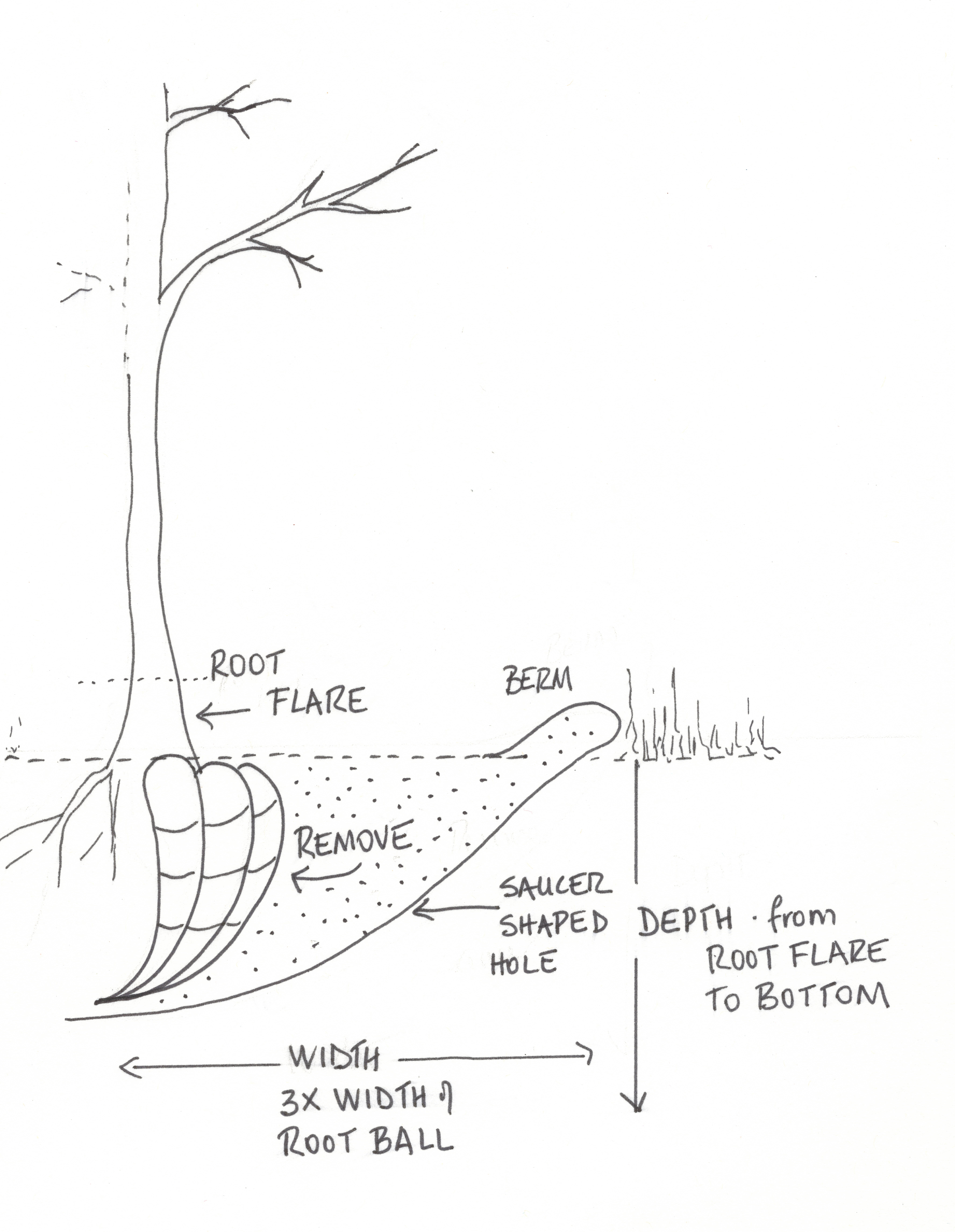
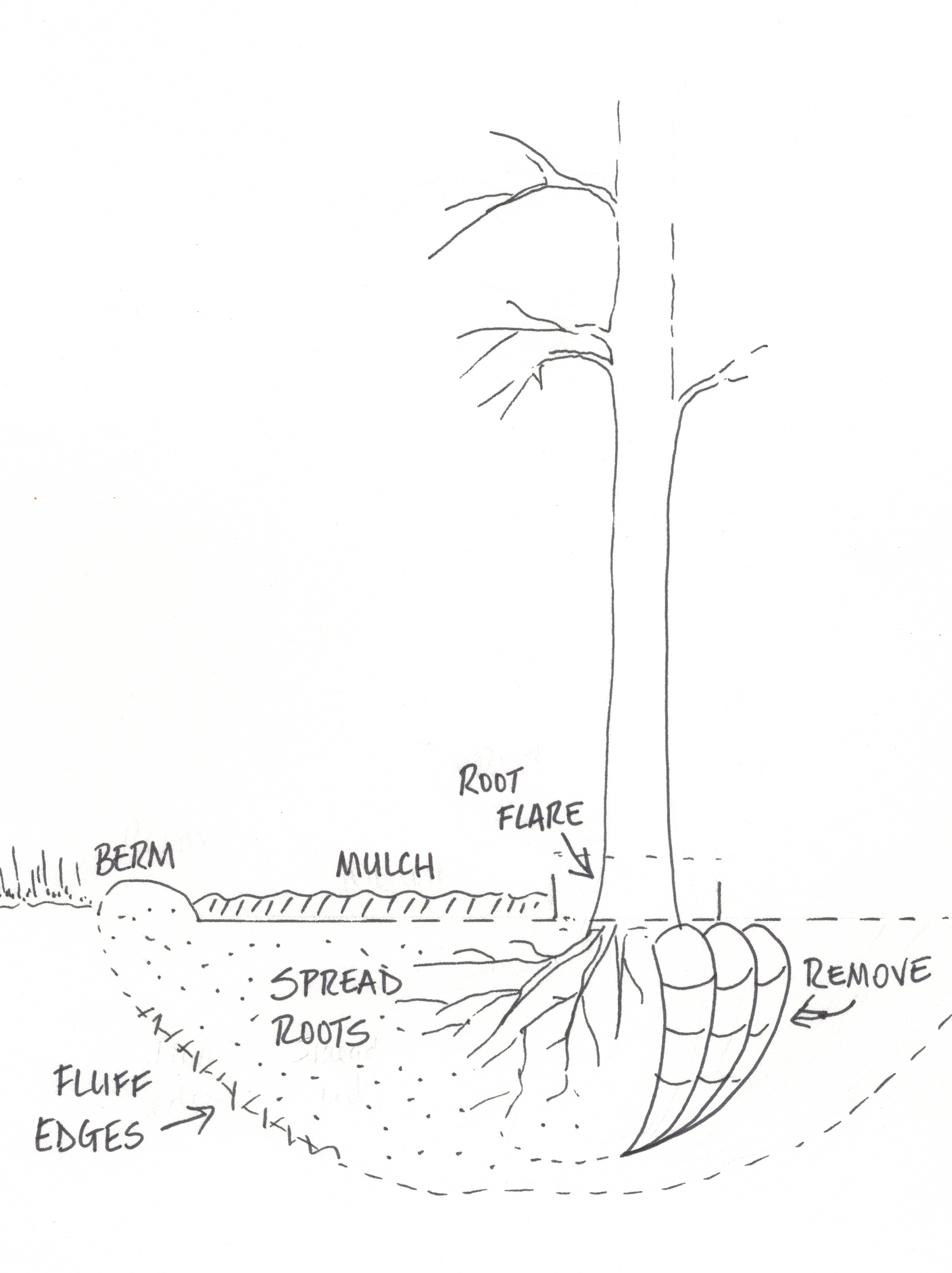
DIG THE HOLE
Lay the tree on the ground or on a tarp and cut off the wire basket best you can. Remove the burlap and any ties that hold it all together and wash the roots with a hose until you can examine them.
However, if the tree is too large for you to manage, stand it up in the centre of the hole, cut off all the cording and burlap and with wire cutters, cut away the metal basket - cut off all you can - you may not be able to remove the piece underneath the root ball without damaging the roots.
Slit the burlap all around and pull off as much as you can- remember the nursery packs the root in clay to form a firm ball that protects the roots between digging, shipping and re-planting... you need to soak it, wash it or find some way to remove that clay so you can examine the roots - (its not soil native to your garden).
See if there are any roots that cross or rub, are torn, broken, tangled, kinked or grow in a circle and carefully prune them.
Gently untangle them and spread them out...remember they grow out...not down.
Add good compost should on top of the ground to feed the soil - not just the plant.
Compost encourages naturally occurring mycorrhizae (beneficial fungi) to attach to the small tree roots, extending them into the soil where they can access essential nutrients. The beneficial microbes are sucked up by the roots and these fungi look like white threads.
MULCH : put a 3-4 inch layer of mulch around the tree to keep grass and weeds from around the base of the trunk keeping it away from the base of the trunk to prevent things from nesting there.
PLEASE DON'T DO THIS,
BELOW....
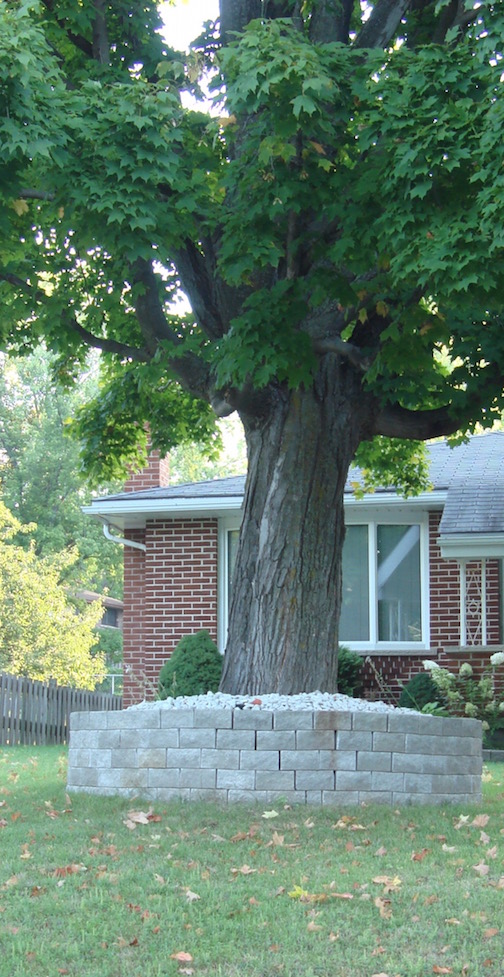
This tree above, will eventually smother and die - the roots need to breathe and be close to the surface ....it would be like wearing a stone turtle neck...
And... how can the tree below spread its roots with all this wrapped around it? choking it - where will its roots go but around in a circle...
Please Don't Do This Either...!!
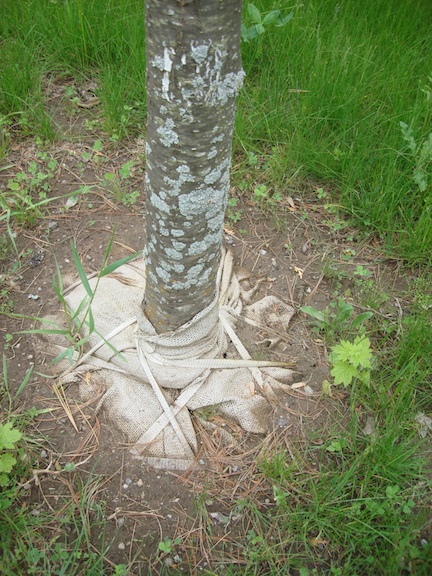
PLANTING BARE-ROOT TREES
Be careful taking the bare-root tree out of its packaging so you don't damage any of the small roots. Cut any broken or torn roots with clean pruners.
Fill a bucket with water and leave the tree soaking for a half day to moisten the roots as they will dry out quickly, shocking the tree.
Same as for the B&B tree, dig the hole larger than the width of tree’s root; but not too deep.
Remember that the flare where the trunk meets the root should not be buried. Make the hole like a saucer - so the roots will have room to spread sideways.
Spread the roots out horizontally and place them on a small mound of soil so the base is supported by the earth beneath. Begin to back-fill with the soil you removed from the hole, pressing the soil down firmly but gently being careful not to compact the soil.
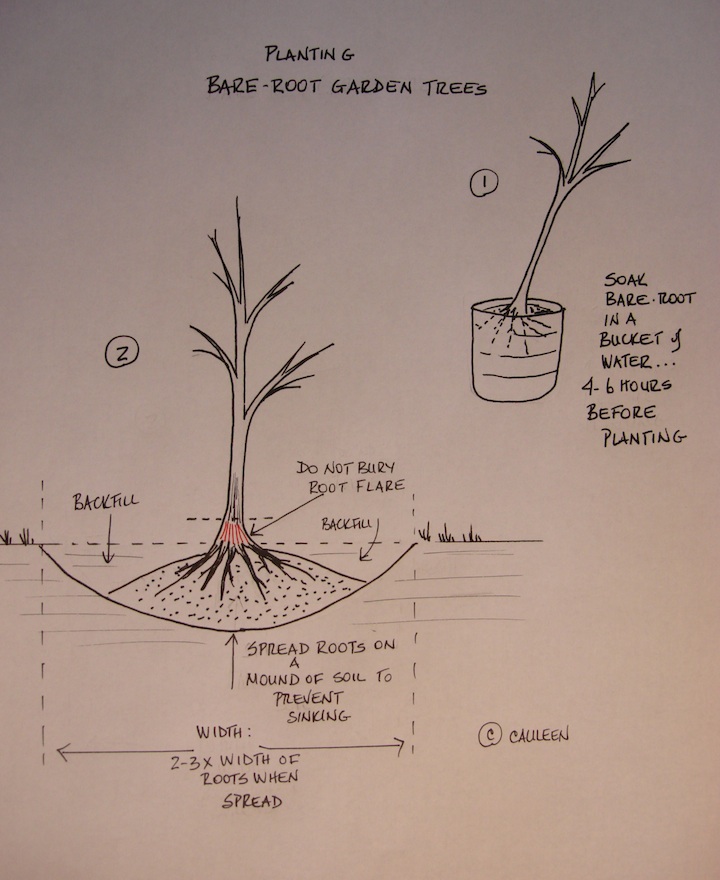
PLANTING POTTED TREES
Soak the tree in the pot in a bucket of water for at least a half day to loosen the soil.
Remove the pot and carefully wash off the soil around the roots.
Check to see if the roots encircle the pot, are broken, dead, tangled or kinked.
If it is severely pot-bound and you cannot loosen the roots, take clean pruners or a sharp knife and slit up the sides of the root ball - this will encourage other roots to grow outward. Make lots of slits up the sides of the hardened mass and try to pull out the bottom edge as much as you can.
Dig the hole the way you would for B&B, or bare-root trees. Plant the tree so the flare is just above the top of the soil.
Don't be fooled by how deep the tree is planted in the pot... the nurseries don't always have the time to check that flare and often just hill up the soil in the pot.)
Place the tree in the centre of the hole and back fill with the soil you dug out of the hole.
Water well but don't flood.
TO FINISH PLANTING ALL TREES
Build an earth dam or ridge of soil around the tree to keep the water from flowing away.
Water well and often…. At least twice a week for the first month and keep the earth moist (but not soaking wet)
You could leave your hose on trickle for 45 minutes every 2 days for the first week... then twice a week for a week, then once a week.... (always more if it is hot and dry).
Don't be fooled if it rains; unless you have a solid, soaking rain for at least a full day, it will not be enough for your tree.
MULCH:
Use 3 - 4 inches (8+ cm) of shredded bark or wood chips around the tree. Shredded bark will let water soak in and so will wood chips.
But large bark chips or synthetic mulches will not. Bark has lignin which the tree uses to repel water from the bark, so it will go to the roots where it is needed... the bark does not need water.
Don't pile mulch up around the trunk like a volcano. This will smother the roots and eventually shorten the life-span of the tree.
Pull it back from around the trunk and leave a space for air to discourage rot and disease or insects.
Do not use STONES - stones require landscape fabric beneath and although some believe it helps to keep weeds down, the fabric lets water run off instead of down. Stones create too much heat and water runs off.
Mulch at least 12-18 inches around the tree to prevent damage from enthusiastic lawn cutters and garden whips (the 2 biggst causesof premature tree deaths)
WATERING:
Water your tree at least twice a week to begin with. It will not survive long without your commitment to watering.
A nice summer rain shower will not suffice.
Trees will always use the water in their root balls first. In hot weather, it only takes a couple of days for that root ball to dry out and if there is no water there, the small roots will stop growing.
On the other hand, too much water will drown your tree. Let water drip onto the root ball slowly, with a soaker hose, or a garden hose left on a trickle for at least 45 minutes at a time. The earth dam will keep the water from running off.
In colder zones (3, 4, 5) roots will grow about 18 inches per year.
That kind of growth does not stop after a year, so neither should your watering. It can take a couple of years for a tree to establish and put out strong roots.. It needs water to do that. So keep watering.
OTHER THOUGHTS:
Please don't use pesticides near your trees.
If you live in a high wind area, or you think your tree is not as strong as you might like, you may stake it for the first year ONLY..but be sure to leave the ties with some slack so the wind can gently move it....
Trees need some wind so they can move: it strengthens their trunks..Use soft ties instead of wire which can embed itself into the bark.
Do not prune the first season you plant EXCEPT for crossing limbs, broken or dead branches.
The tree has already lost more than 90% of its roots when it was dug and pruning adds more stress.
You won’t need to wrap the trunk either except at the base in winter when bunnies or other hungry critters may find the bark tasty, but be sure to remove during the growing season.
Check the growth of your tree in the following seasons - if it is growing faster and larger than you planned, or if it is too close to a house or your neighbour’s fence, it is time to move it before it gets too large.
See what can happen below?
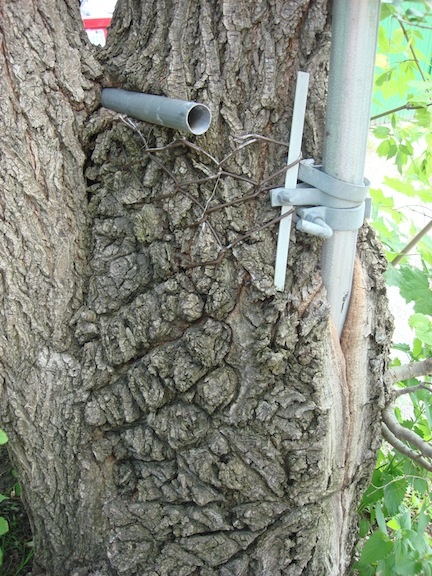
Here are other links with more tree planting information you might like to see.
http://extension.usu.edu/files/publications/publication/NR_FF_017pr.pdf (this is on planting landscape trees)


